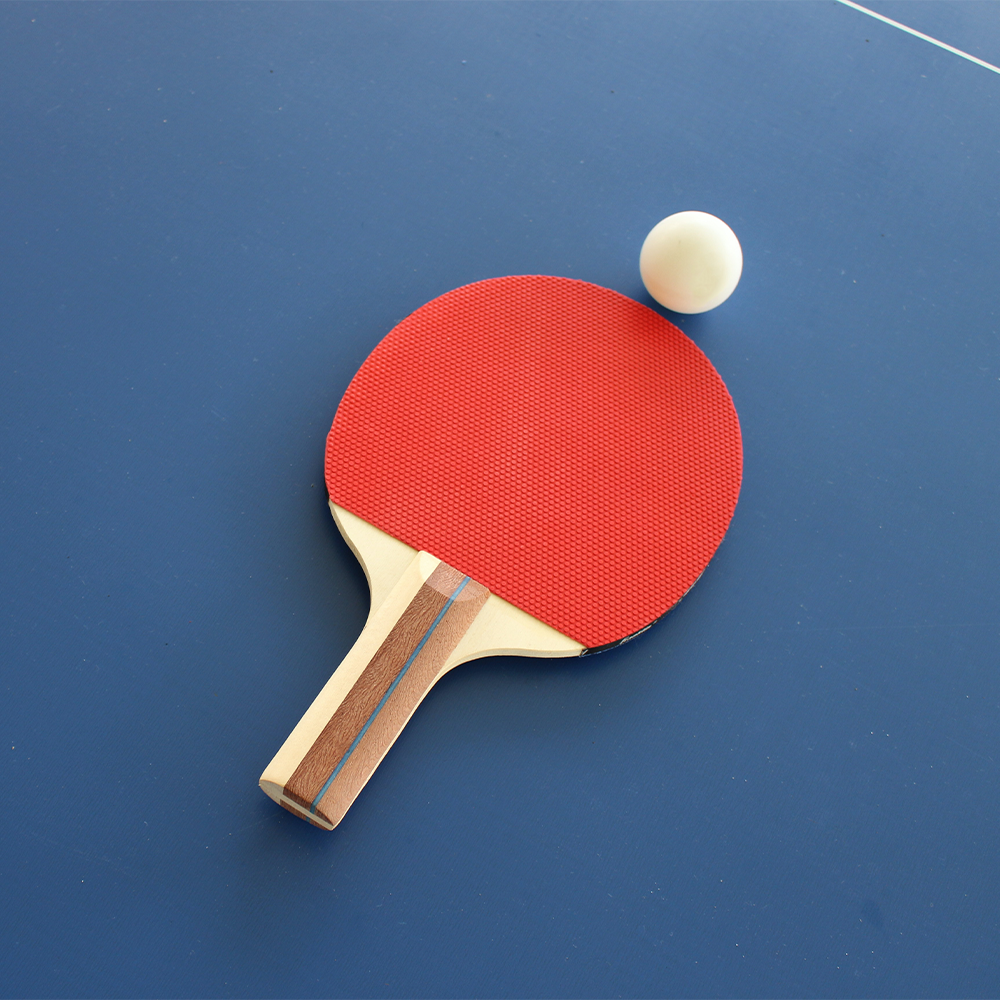
How to choose a table tennis racquet
Share
*We use the term “table tennis” instead of “ping pong” because it is the correct word, as ping pong is actually a trademark name by a toy company in England.*
In this article, we’ll cover how to choose the right table tennis racquet for you. Choosing a table tennis racquet is usually based on individual playing style, skill level, budget and preferences. Among the most common brands, you will find Donic, Yasaka, Cornilleau and Stiga, which are the most used globally. Here are the factors to consider when choosing a table tennis racquet:
Blade
The blade is the main part of the racket, and it comes in various sizes, shapes, and materials. The blade's thickness, weight, and stiffness affect the racket's power, control, and spin. Generally, beginners should opt for a thinner blade with more control, while advanced players might prefer a thicker blade with more power.
Here are the most common blade materials:
- Wood: The majority of table tennis racquets use wood as the primary material for the blade. Different types of wood can be used (Balsa, Koto, Ayous, Limba), and the combination of the woods can affect the racket's power, control, and speed.
- Composite materials: Some table tennis racquet blades use composite materials such as carbon fiber or fiberglass to enhance the blade's stiffness and durability. The most expensive racquets are usually made of composite materials.

Here are some composite blades used by advanced players.
- Hybrid: Some rackets use a combination of materials such as wood and composite materials, resulting in a hybrid blade that offers a balance of power, control, and speed.
- Rubber: This is mostly reserved for outdoor racquets, to make them more durable and resistant to weather.

Here's an exemple of outdoor racquets made of rubber.
Rubber
The rubber on the paddle affects the spin and speed of the ball. There are two types of rubber: smooth and pimpled. Smooth rubber is ideal for players who want more spin, while pimpled rubber is better for players who prefer more control.
Grip
The grip is an essential factor when choosing a table tennis racquet. Make sure the handle of the racquet feels comfortable in your hand and provides a secure grip. The majority of racquet have a "square" shaped grip.
Sponge
The sponge layer is located beneath the rubber and affects the speed and spin of the ball. Thicker sponges offer more power and speed, while thinner sponges provide better control.
Personal preference
Ultimately, your personal preference will play a significant role in your racquet selection. Try out a few different racquets to see which one feels the most comfortable and suits your playing style.
Custom Racquets
Players can build their racquets by buying the separate parts to have a custom build, choosing the blade, the foam and the rubber. All these piece are assembled with a special glue and the finishing tape. It's best to speak with and expert to have the have right build correctly assembled. Feel free to give us a call to get advice!
It is also worth considering your skill level, as a beginner might not require the same level of control or spin as a more experienced player. Once you have chosen your racquet, make sure to maintain it properly by keeping it clean and storing it in a protective case. You can shop table tennis racquets here.